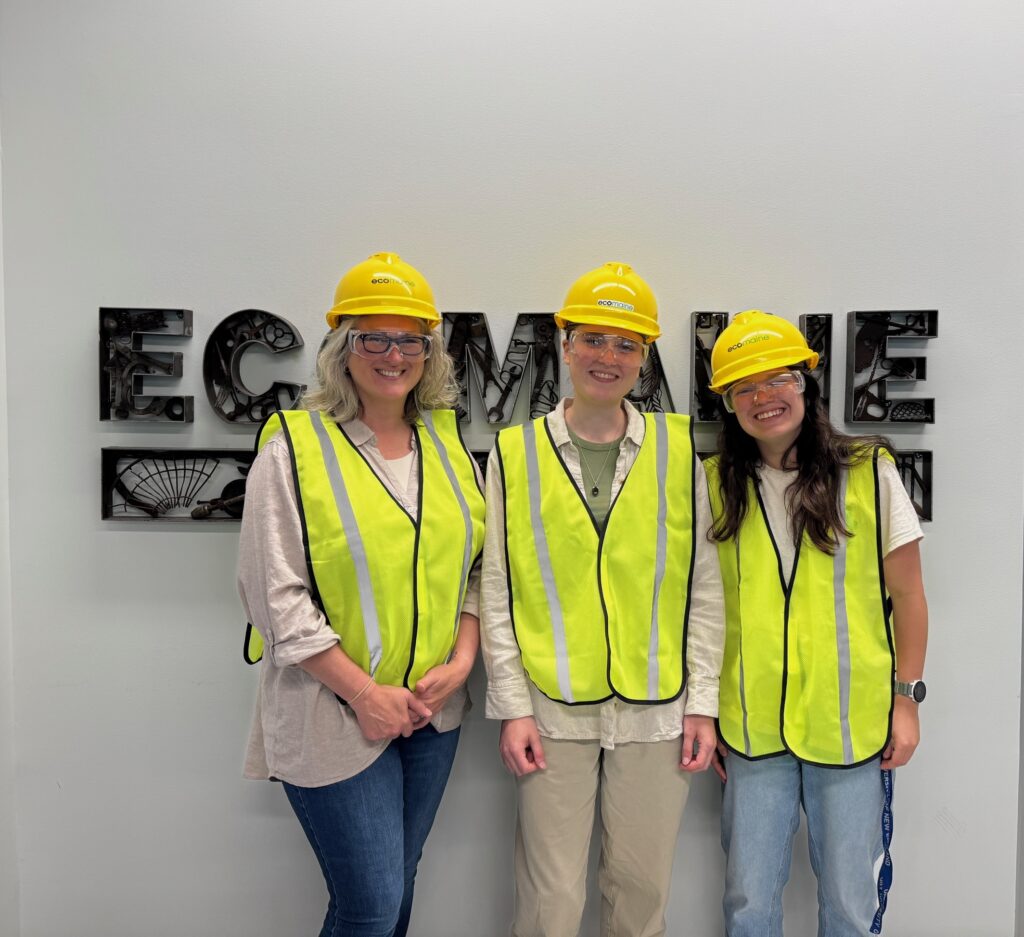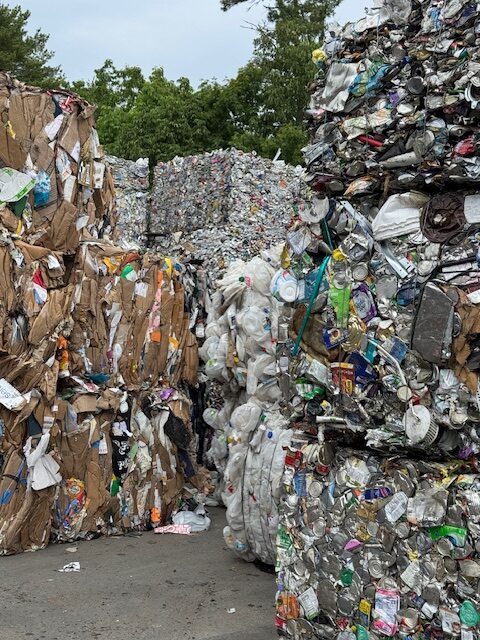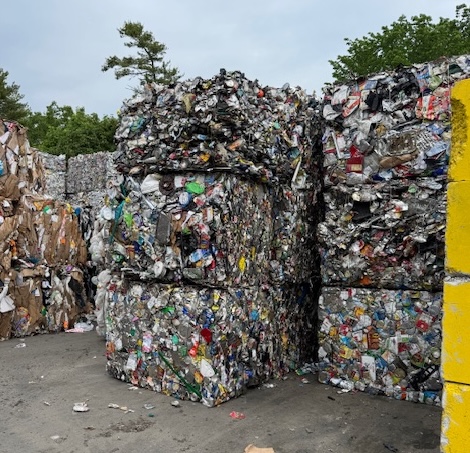by Isabel Ryan
Last Friday, Sustainability Fellows Kaci Bieu and I, along with our mentor Alethea Cariddi, Director of Sustainability, visited the Ecomaine facilities in Portland.
We learned all about the waste management systems that are housed at Ecomaine, dove into the history of the company, and toured the recycling facility that Ecomaine currently uses. Our tour guide, Annie, provided a virtual tour of the waste to energy plant because the facility was shut down for maintenance. Ecomaine incinerates trash to produce electricity for their facilities and electric vehicles, and for 15,000 homes in the state of Maine each year.
Trash Processing
The conversion of trash into electricity starts with the tipping ground, where trucks come in after being weighed and dump their waste into a huge room to be pushed towards the bays for processing. Once trucks have emptied their waste, they return to an exit weigh station to calculate the total weight of their waste. Meanwhile, the waste is processed through incineration. In the incineration chambers, the waste is burned at around 1800 degrees fahrenheit. Each incineration chamber is lined with water pipes. These pipes allow for the water inside to heat up, boil, and produce steam that is converted into electricity. Once used as electricity, the plant releases 96% water vapor (after cleaning the emissions). Burned trash is now considered ash, and is transported to a landfill to be entombed.
Recycling Processing
While we didn’t get to see the waste process first hand, we got the full sensory experience of touring the Ecomaine recycling facility. Annie explained that the building Ecomaine currently uses for recycling is quite old, and they are looking to convert a newer building on the property into a bigger recycling facility with more advanced technological capability.
Similar to trash processing, the recycling process begins with trucks dumping their materials on the tipping ground. These materials are pushed back with a huge bulldozer into the bay where they are deposited onto a conveyor belt to begin the sorting process. These tipping grounds were recently equipped with water cannons, due to the frequency of fires in the area, which occur as a result of discarded lithium-ion batteries being pressurized, and run over, etc.
Once the recycling lands onto the initial conveyor belt, workers grab any visible trash bags, or materials that may catch in the machinery. Sorting of the recyclable material occurs in a variety of ways. First, cardboard and paper are sorted through a rapid star spinner machine that allows the desired material to float above the star spinners, while the other material falls through to the next sorting belt below. Ecomaine has an attractor for steel and tin, grabbing these materials and putting them on another belt, and a repeller for aluminum that pushes these materials onto a separate belt. An optical scanner can identifys PET and HDPE plastics and sort them using a blast of air. Glass is separated and broken, and recycled in this form. The final materials left on the belt are any trash, and plastics #3-7. When I asked about the plastics that fall into the 3-7 categories, Annie said these products are baled and stored and sold only twice a year because they are only worth a few dollars a bundle, a very low price.
Once sorted, the materials are gathered and bundled with metal cord, and then stacked for resale. We walked through the recycling yard behind the sorting facility, and towered high above us were cardboard bundles, tin and steel bundles, and plastic #3 bundles. These bales are sold to buyers, who pick up the materials. As we were leaving the facility, there was an 18- wheeler being loaded up with cardboard bales.
Overall, the tour was a great experience to visualize where our recyclable materials go, and why certain materials are not valuable or accepted at Ecomaine. For example, Ecomaine doesn’t accept shredded paper that is not in clear plastic bags because it falls through the conveyor belts. This is the only material that can be in plastic bags, and they have to be transparent so workers can see what is inside. Other than shredded paper, all other materials must be at least 2×2 inches in size to be accepted by Ecomaine. I appreciated seeing the entire recycling process to completely understand what information gaps we need to address with more targeted communication on our campuses, and within our community at UNE.
To learn more about Ecomaine, visit their website:
ecomaine – Maine’s Leader in Sustainable Waste Management




